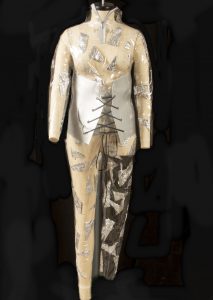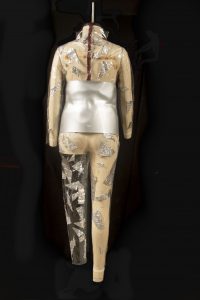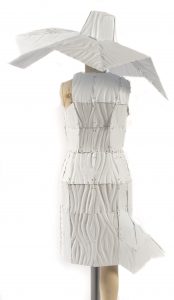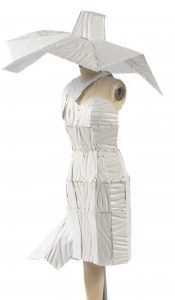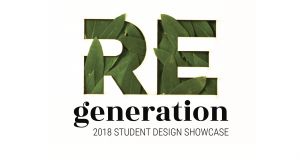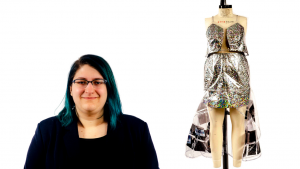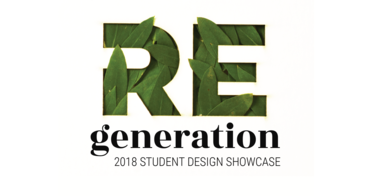Booming thunder, bolts of lightning, buckets and buckets of rain—last night’s gloomy evening was the perfect setting for a fairy-tale hero to swoop in, swing the sword, and save the day. While slaying did ensue, audiences dropped dead from looks, not from dragons or witches or what have you. Students, professors, and designers gathered at the Weisman Art Museum and eyed the catwalk, awaiting the annual Student Design Showcase, Between the Seams.
Inspired by the Wonderful World Before Disney, WAM’s current exhibition which depicts countless fairy-tale postcards and illustrations that pre-date Disney’s interpretations, the sophomore designers spoke to the moral, social, and political aspects of the age-old tales with garments that hit the marks on wearable, recyclable, collectible, and many cases, all of the above.
Each of the 18 garments were some sort of take on a classic cocktail dress, save for one lone jumpsuit designed by Chong Xiong.
